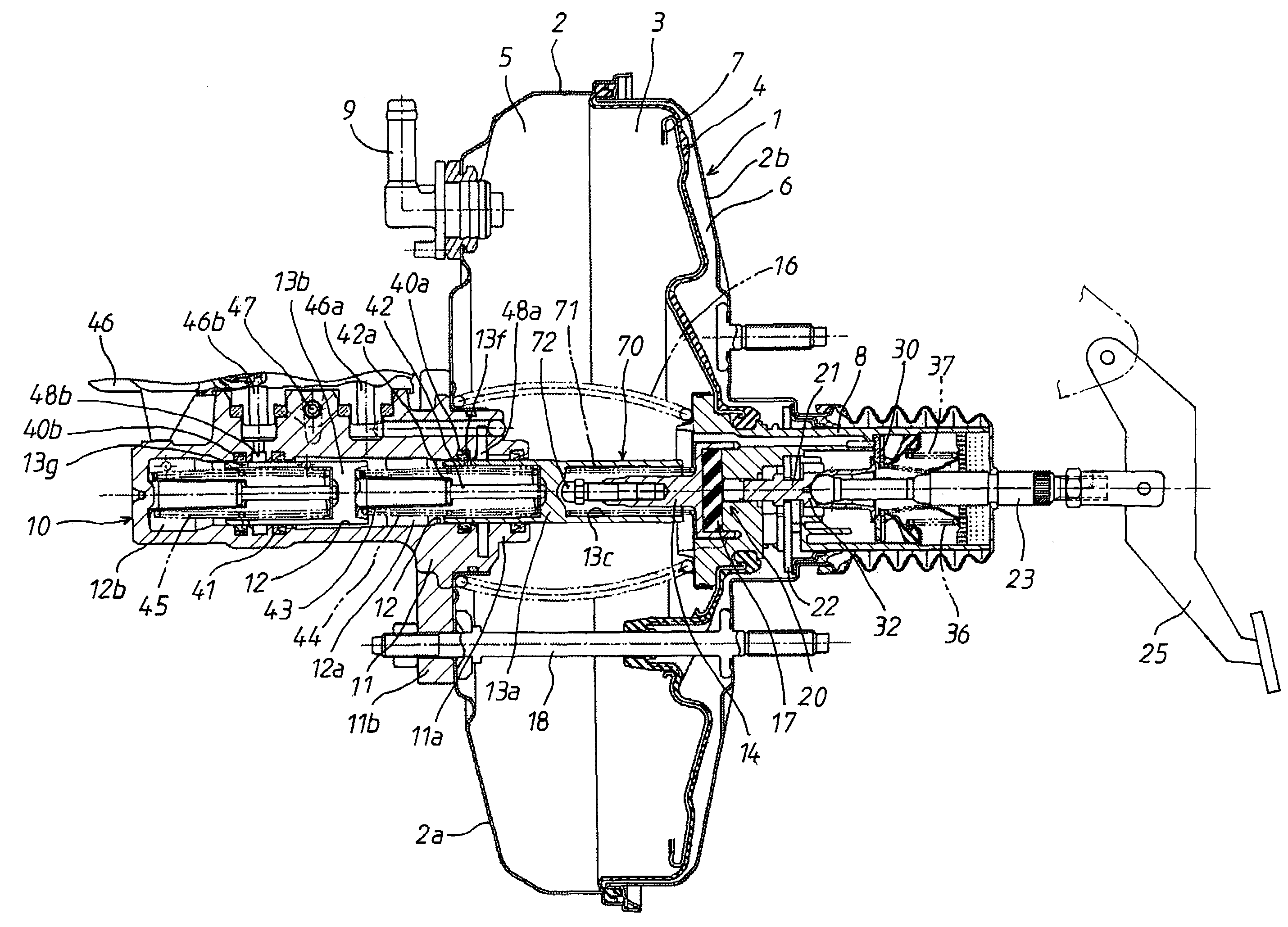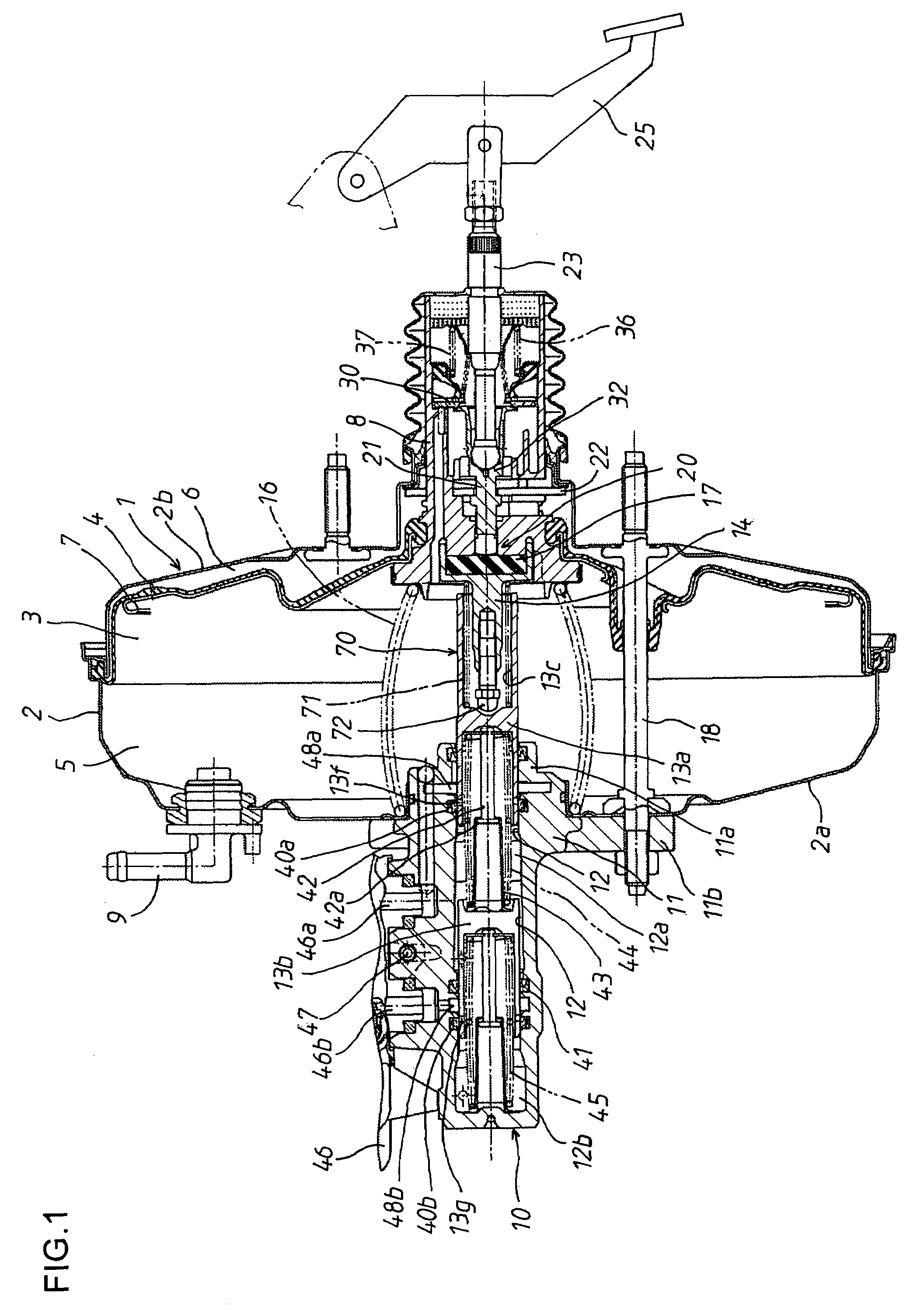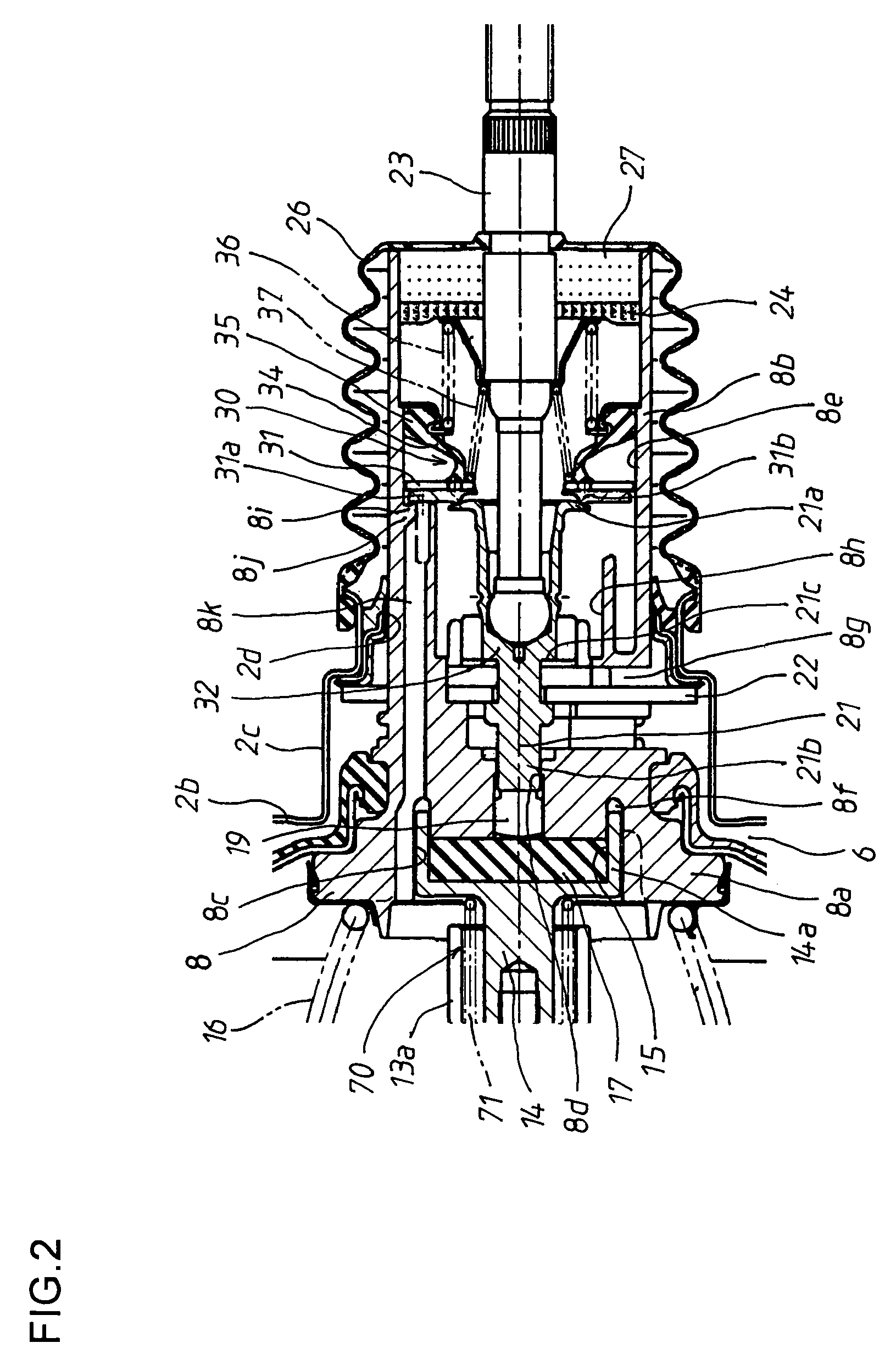Vacuum booster of brake device
a technology of vacuum booster and brake device, which is applied in the direction of fluid coupling, rotary clutch, servomotor, etc., can solve the problems of generating vibration or noise, reducing the area of the valve mechanism, and preventing vibration and noise in the valve mechanism
- Summary
- Abstract
- Description
- Claims
- Application Information
AI Technical Summary
Benefits of technology
Problems solved by technology
Method used
Image
Examples
second embodiment
[0063]As shown in FIG. 5, in the stop position shifting means 70, an axial hole 13c is axially formed in the rear end of the first piston 13a. A stepped hole 13d is formed in the bottom of the axial hole 13c. A contact shaft part 73a provided on the front end of a contact member 73 is slidably fitted in a small-diameter hole 13e of the stepped hole 13d. A compression spring 71, which is an elastic member made of a shape memory alloy, is interposed between the back surface of a head part 73b of the contact member 73 and the stepped portion of the stepped hole 13d. The head part 73b of the contact member 73 faces a rod part 14b, which extends forwards from the output rod 14.
[0064]When the temperature is high, the compression spring 71 is returned to the memorized shape. Therefore, when the valve piston 8 and the output rod 14 are at non-operating positions, the stop position of the first piston 13a, at which the first piston 13a is prevented from being moved further backwards by the o...
third embodiment
[0066]As shown in FIG. 6, in the stop position shifting means 70, the output rod 14 is divided into a first output part 14c and a second output part 14d. The first output part 14c includes a ring-shaped protrusion 14a, which is fitted in the ring-shaped groove 8f of the valve piston 8. The second output part 14d includes a rod part 14b, which contacts the first piston 13a. In addition, a stepped hole 14e is formed in the rear end of the second output part 14d. A contact shaft part 14g provided on the back surface of the first output part 14c is slidably fitted in a small-diameter hole 14f of the stepped hole 14e. A compression spring 71, which is an elastic member made of a shape memory alloy, is interposed between a stepped portion of the stepped hole 14e and the back surface of the first output part 14c.
[0067]When the temperature is low, the compression spring 71 is returned to the memorized shape. Therefore, while the valve piston 8 is at a non-operating position, the second out...
fourth embodiment
[0069]As shown in FIG. 7, in the stop position shifting means 70, a compression spring 71, which is an elastic member made of a shape memory alloy, is interposed between the inner surface of the protruding part 2c of the rear booster shell 2b and the key member 22, which radially passes through the valve piston 8 and contacts the inner surface of the protruding part 2c to limit backward movement of the valve piston 8 and the input member 32 relative to the booster shell 2. Thus, when the temperature is high, the position at which the backward movement of the key member 22 is limited, is set ahead compared to when the temperature is low.
[0070]When the temperature is high, the compression spring 71 is returned to the memorized shape. Therefore, when the valve piston 8 is at a non-operating position, the key member 22 contacts the compression spring 71 abutting to the inner surface of the protruding part 2c, and thereby the key member 22 is stopped at the stop position shifted forwards...
PUM
 Login to View More
Login to View More Abstract
Description
Claims
Application Information
 Login to View More
Login to View More - R&D
- Intellectual Property
- Life Sciences
- Materials
- Tech Scout
- Unparalleled Data Quality
- Higher Quality Content
- 60% Fewer Hallucinations
Browse by: Latest US Patents, China's latest patents, Technical Efficacy Thesaurus, Application Domain, Technology Topic, Popular Technical Reports.
© 2025 PatSnap. All rights reserved.Legal|Privacy policy|Modern Slavery Act Transparency Statement|Sitemap|About US| Contact US: help@patsnap.com



